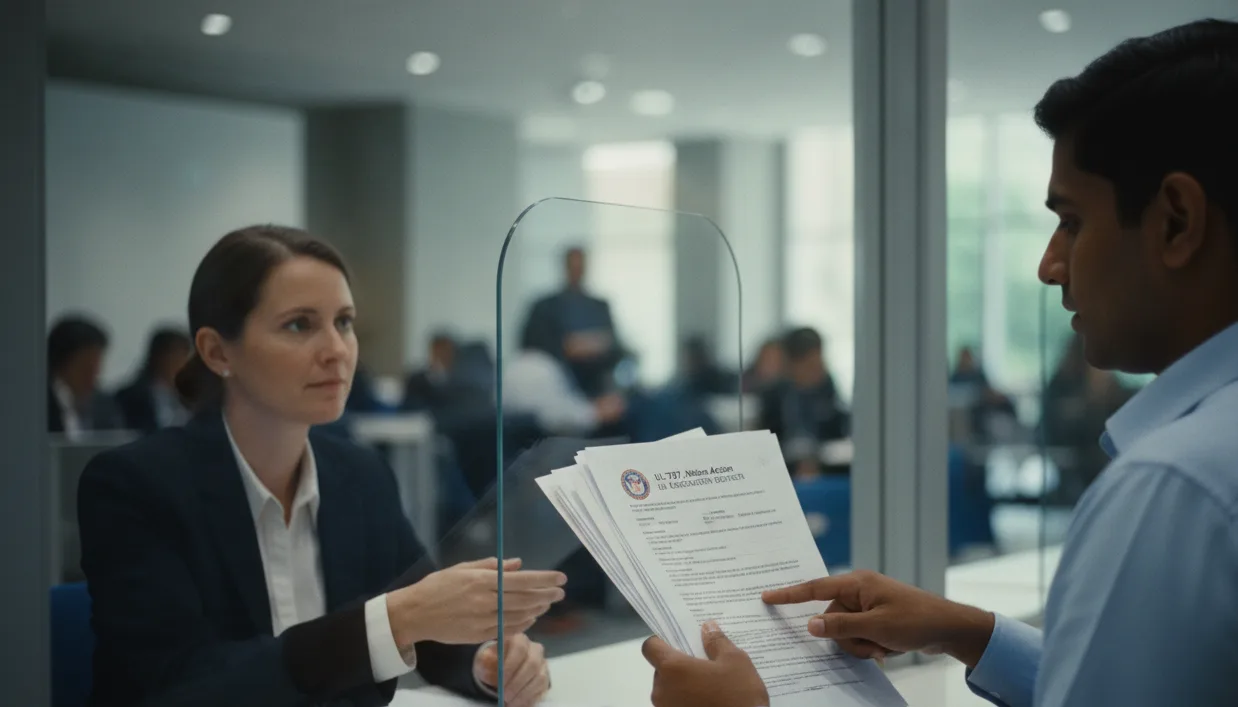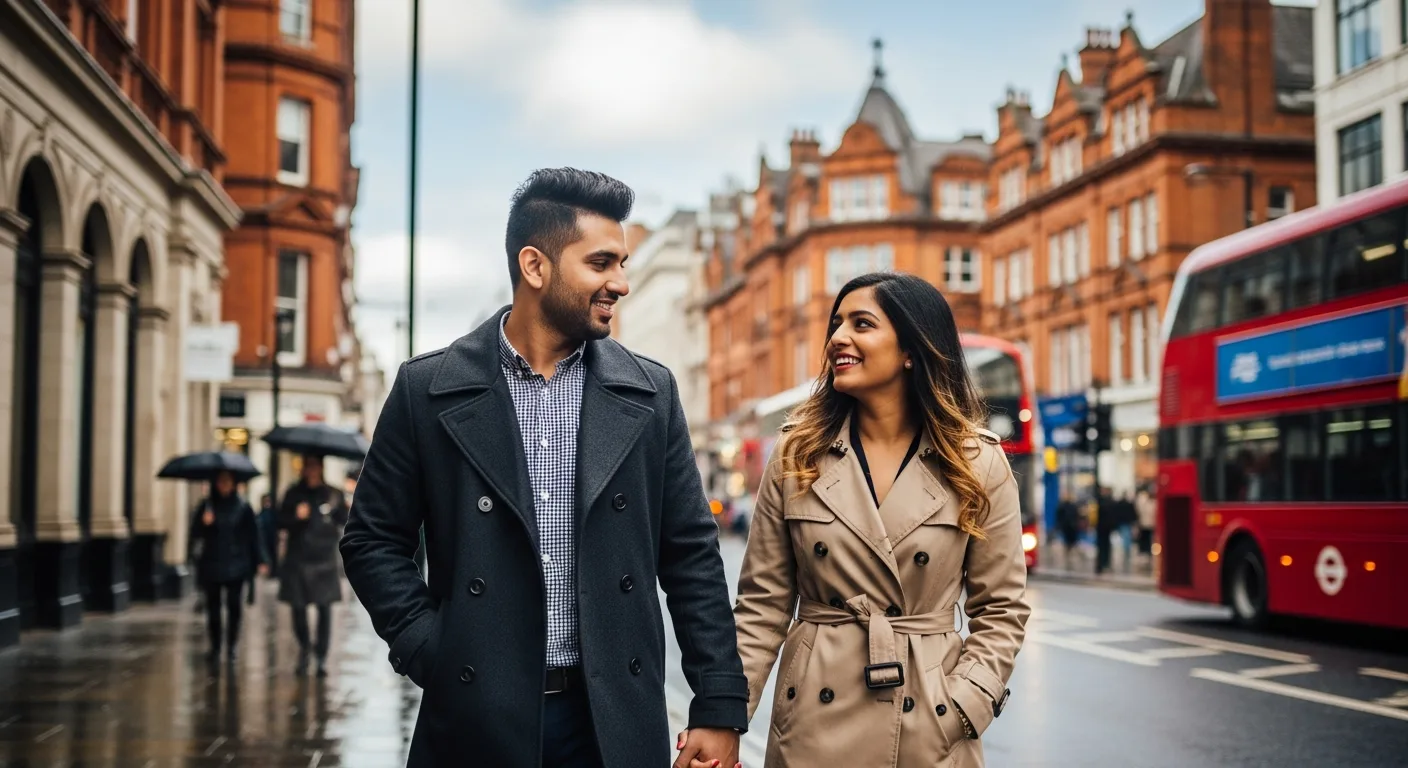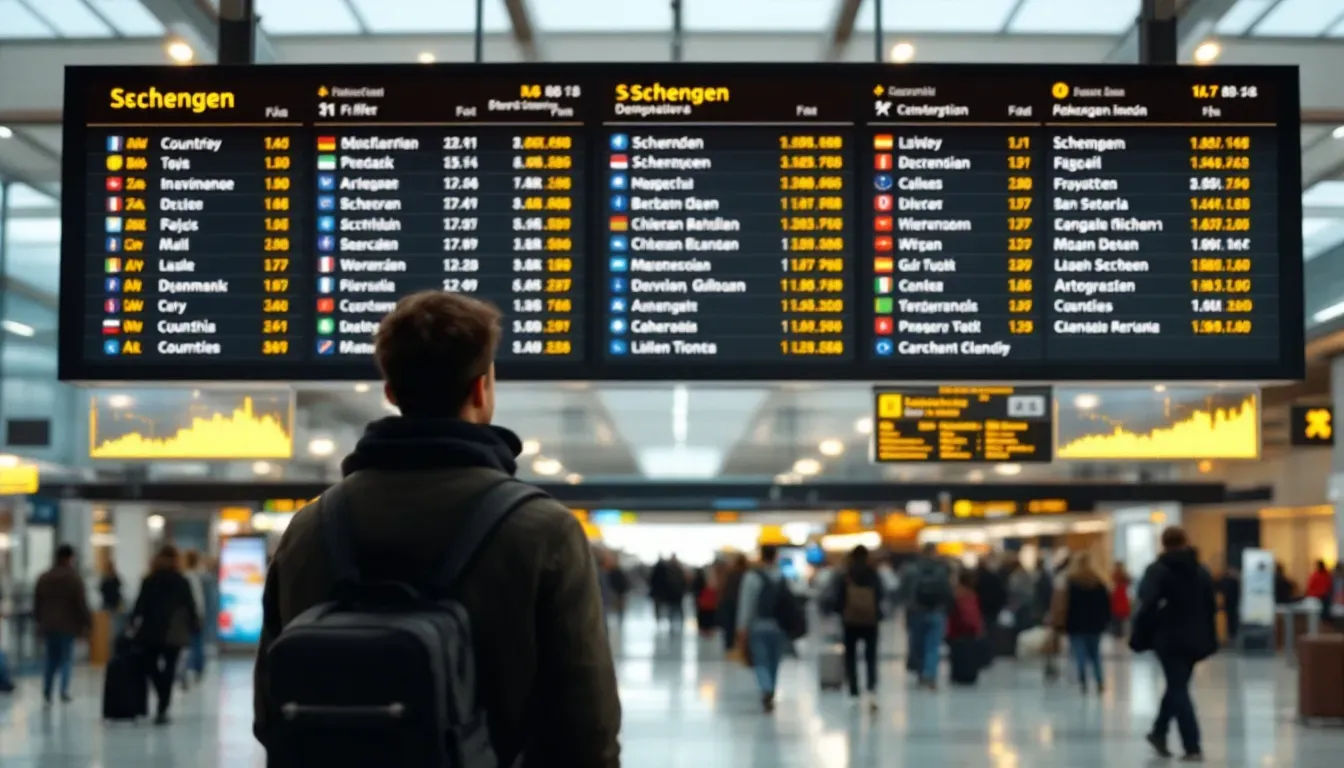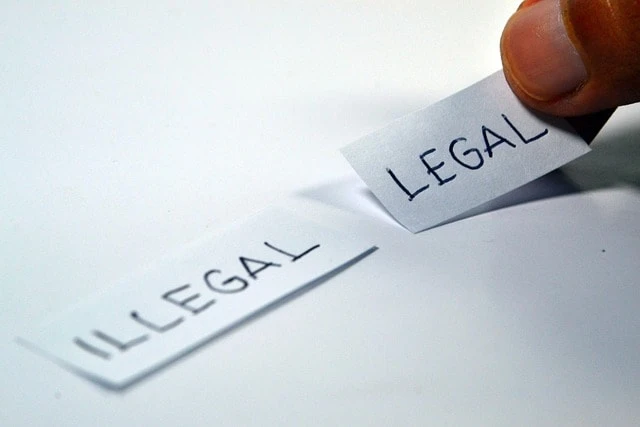US O-1 Visa Interview: Do You Need an Onward or Dummy Ticket to Pass?
An onward or return ticket is not a legal requirement for an O-1 visa. What helps, though, is proof that your travel plan matches your approved work. That small detail can smooth your consular interview in India and your entry at a U.S. airport. For more details on visa requirements, check our FAQ.
Think of the O-1 as a job-linked visa. Officers care about your petition dates, who you will work with, and when you will start. CBP cares that your story and your papers line up. A simple, coherent itinerary does that job. Explore additional tips in our blogs for O-1 travelers.
No — an onward or return ticket is not mandatory for a U.S. O-1 visa, but providing a verifiable flight reservation can strengthen your application by showing clear, documented travel intent. Since O-1 visas are issued to individuals with extraordinary ability, consular officers expect organized, consistent supporting documents, especially regarding travel plans, itinerary dates, and sponsor information. A dummy onward ticket with a real PNR from DummyFlights.com offers embassy-accepted proof of travel without the risk of purchasing a costly, non-refundable ticket before approval.
Last updated: November 2025 — based on current U.S. O-1 visa interview and travel documentation requirements.
Table of Contents
In this guide, we cut the noise. You’ll see how consulates and airlines actually check documents for O-1 travelers from India, when a one-way ticket makes sense, and when a refundable or holdable return helps keep costs low and questions short. Lock your interview date now—dummy ticket in minutes. Learn about our team's expertise on the About Us page.
Why Proof Of Plans Helps O-1 Visa Applicants
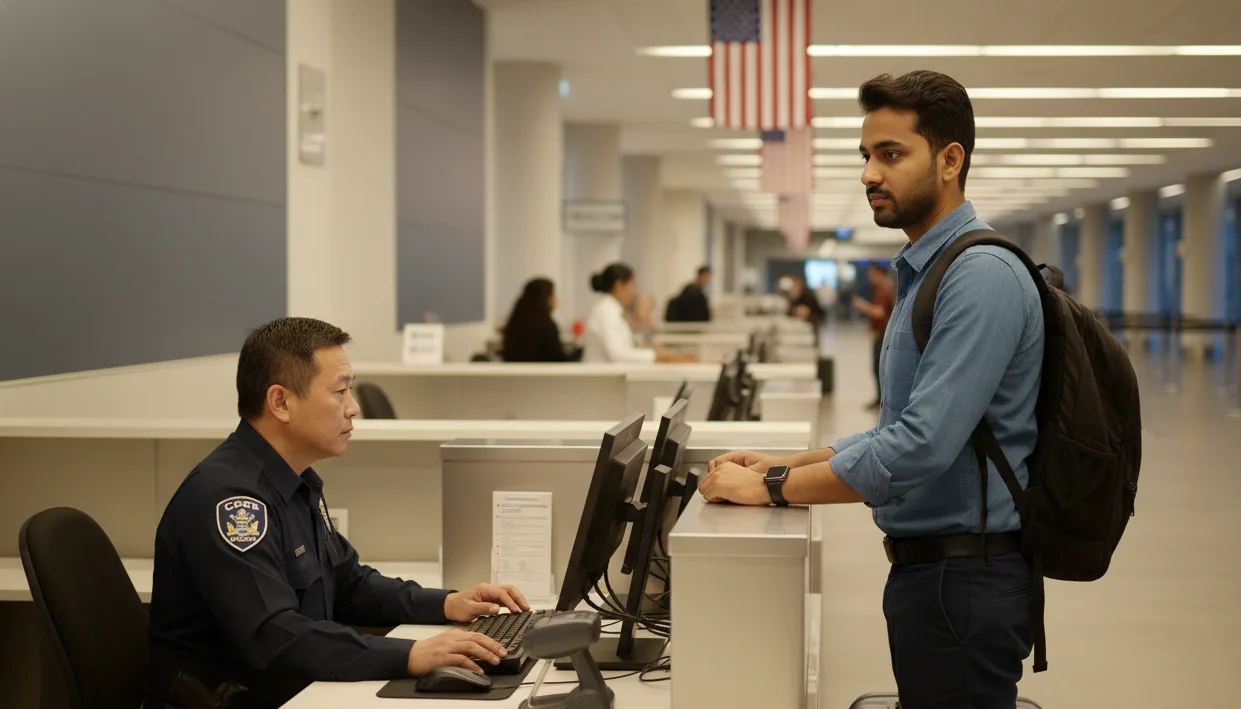
You already know the O-1 is tied to real work. The question is whether you must show an onward or return ticket. You do not. What you do need is a plan that matches your petition and a way to prove it quickly when someone asks. Need quick proof of plans for check-in staff? Try instant dummy ticket booking.
What Indian Consulates Actually Care About
At the window, officers are scanning for coherence, not prepaid returns. They look for:
- Your I-797 approval and its validity dates
- Who is employing or sponsoring you, and for what role
- Where and when you will start
- A work itinerary that makes sense for the petition period
- Basic financial readiness for the first phase of your stay
If your petition says rehearsals start in New York on 10 March and your intended arrival is 8 March, that lines up. If your first engagement is in Los Angeles, yet your itinerary shows an initial week in Chicago without a reason, expect a follow-up question.
Tickets are sometimes requested, often not. A simple printout of your intended flight and first stay covers the “what is your plan” question without locking in a costly return. For official guidance, refer to the U.S. Department of State on temporary worker visas.
Visa Issuance Is Not Admission: Treat Them As Two Checks
A visa from New Delhi or Chennai lets you travel. It does not guarantee entry. CBP at the U.S. airport decides admission. The consular officer wants a credible work story tied to the petition. The CBP officer wants to see that same story hold up when you arrive.
Think of it as two quick audits of the same file. Your dates, city of arrival, first workplace, and contact person should match across your petition exhibits, employer letters, and itinerary. If something shifted after filing, carry a fresh confirmation email or letter that explains the change in one line. This alignment ensures your application demonstrates the extraordinary ability required for O-1 approval, backed by evidence of national or international acclaim.
What CBP Might Ask You On Arrival
Primary inspection is usually short. Typical questions:
- Where will you stay first, and for how long
- When is your first workday or rehearsal
- Who is your U.S. employer or agent, and how to reach them
- What travel are you planning after the initial engagement
- How long do you intend to remain before the first return to India
You can answer these in two sentences if your documents match. Keep a “port folder” in your carry-on:
- I-797 approval and a compact copy of the petition
- Contract or engagement letter with start date and location
- A one-page itinerary showing your flight to the U.S. and the first domestic leg if relevant
- First U.S. address and a phone number that can be picked up during Indian night hours
Expanding on this, many O-1 applicants from India find that preparing this folder not only speeds up the process but also builds confidence. For instance, including a sample itinerary can highlight how your travel aligns with project milestones, such as initial consultations or creative sessions.
Why A Coherent Itinerary Reduces Friction
No one is expecting a perfect plan. They are looking for a sensible one. Here is how coherence plays out for different travelers:
- Touring artist. A grid with cities and approximate dates, plus the first venue letter. One-way into the first city is normal.
- Short festival or conference. Round-trip within a reasonable window mirrors the invite. A flexible or refundable return keeps you safe.
- Startup consultant or researcher. One-way into the project city is fine if the contract shows a longer placement.
- Family joining later on O-3. Separate itineraries make sense. Each traveler should carry copies of the O-1’s I-797 and a shared first address.
Consistency beats commitment. If your petition shows activities through September, flying one-way in April and planning to book a return in August is reasonable. Just keep a written note or an employer email that aligns with that timeline. This approach is particularly useful for fields like arts, sciences, or business where schedules can evolve based on collaborations or funding.
India-Specific Check-In Realities You Will Actually See
Airline staff in India primarily verify that your visa is valid and your name matches your passport. They may ask for the I-797 or a supporting letter if the visa is new. Onward tickets are not a standard system requirement for O-1. Still, staff training varies by shift and station. Now and then, an agent applies the tourist playbook and asks for a return.
Being ready for that moment saves time:
- Carry a printed or PDF itinerary that shows your first flight and the general plan after the engagement
- If you are on a one-way, keep the employer letter handy with the start date
- Keep layovers realistic on common India–U.S. routes via Doha, Abu Dhabi, Dubai, Frankfurt, Amsterdam, or London
- Avoid razor-thin connections on your first entry. A missed inbound can complicate I-94 timing for tight project starts
For students transitioning to O-1 after OPT, first-time applicants, and digital nomads shifting from multiple short gigs, clarity matters even more. A two-line explanation letter from your agent or employer that lists start date, city, and expected project length can defuse most check-in questions. Consider how routes like Mumbai to New York via European hubs can add an extra layer of scrutiny if connections seem off.
Sample Talking Points That Work Under Pressure
Use calm, direct sentences that match your paperwork:
- “My O-1 start date is 10 March in New York. I am arriving on 8 March and staying at this address for onboarding.”
- “This is a touring schedule. I enter through Los Angeles for rehearsals, then fly to Austin. Dates may shift by a few days, and the agent letter confirms the window.”
- “It is a longer placement. I will book the return closer to the project wrap in September. Here is the contract page with the timeline.”
These short answers signal that you are prepared, not overexplaining. Officers and airline staff respond well to clear, consistent statements supported by one or two pages of proof. Practicing these can make a big difference, especially under the stress of a busy airport.
Travelers From India
You do not need a prepaid return. You do need a plan on paper. Keep your petition, employer letters, and itinerary aligned. Carry a compact port folder. Choose flights that match your real start. If dates change, update your proof before you fly. That is how you keep both the consulate and the border comfortable while you keep your costs and commitments under control. For more personalized advice, our blogs cover common scenarios for Indian O-1 holders.
Two Gates To Clear: Visa Window Vs. U.S. Entry, And How To Align Your Story

Think of your trip as a two-step check. First, the consulate decides whether to print the visa. Then CBP decides whether to admit you. When your documents and dates line up, both steps feel routine. Keep costs low while you finalize dates—book a dummy ticket and update it anytime.
What Consular Windows In India Prioritize
At New Delhi, Mumbai, Chennai, Hyderabad, or Kolkata, officers move fast. They look for clean alignment across a few anchors:
- I-797 approval with clear validity dates
- Who is employing or sponsoring you, and for what role
- Where and when you will start work
- A credible engagement timeline that fits inside the petition window
- Enough financial readiness to cover the initial phase of your stay
You do not need a paid return, but a simple, dated plan helps. If your petition lists rehearsals from 12 June in Los Angeles, show an intended arrival around 9 or 10 June. If your first city changed after filing, carry a short update letter from your agent or employer. This process underscores the O-1's focus on extraordinary ability in fields like education, arts, or athletics.
Make Your Papers Sing The Same Tune
We want your narrative to match across every page. That means:
- The arrival city on your itinerary should match the first work site in the petition exhibits
- Your first work date in contracts should match the employer letter you carry to the window
- Your accommodation proof should place you near the first venue or office
Inconsistencies create questions. A one-page “travel snapshot” solves this. Put your intended flight, first address, employer contact, and first work date on a single sheet. Keep it in front of your petition packet. If dates slip, reprint the snapshot and attach the latest email confirmation. Such tools are invaluable for maintaining the non-immigrant intent central to O-1 approvals.
Financial Proof Without Heavy Lifting
Show readiness, not wealth. For Indian applicants, three recent bank statements, a contract page that lists per diem or project advances, and a short employer note that confirms start logistics are enough. Avoid stacking unrelated fixed deposits or property papers. Officers care more about whether your first weeks are covered than your full net worth. This ties into proving your ability to sustain yourself during the initial engagement period.
CBP’s Lens At The Airport: Quick, Practical, And Date Focused
At primary inspection, CBP wants to verify the same story. Expect short questions:
- Where will you stay first
- When is your first day on site
- Who is your U.S. contact and phone number
- What happens after the first engagement
- How long you plan to remain in status before flying out or switching to the next contract
You can answer in two lines if your packet is tidy. Hold your I-797, employer letter, itinerary printout, and first address together. Keep your U.S. contact reachable by phone. Officers like clarity they can verify fast. Delays here can impact your I-94 record, so precision is key.
If Reality Changed After Filing: Fix The Paper, Not The Truth
Projects shift. Tours move. That is normal. Here is how to keep it clean:
- Get a fresh employer or agent letter that states the revised start date and city
- Update your itinerary or reservation to mirror the new plan
- Add one line to your travel snapshot that says “updated on [date]”
- Keep older pages in the packet, but place the update on top
Transparency beats guesswork. You do not need to lock a return date to look credible. You need the current version of your plan in your hand. This flexibility is especially helpful for creative professionals where inspiration strikes unpredictably.
Scripts That Keep Everyone Comfortable
Use direct, present-tense statements that mirror your documents:
- “Our contract start is 12 June in Los Angeles. We arrive on 9 June. Here is the address.”
- “This is a tour. We enter New York for rehearsals, then play Chicago and Seattle. Dates may shift inside the petition window. The agent letter shows the range.”
- “The placement runs through September. We will book return travel near project wrap. The contract timeline is on this page.”
Short, steady answers suggest preparation. Officers respond well to calm confidence backed by paper. Rehearsing these can turn potential stress into a smooth exchange.
Situations We See Often, And How To Align Them
- First-Time O-1 After OPT. Your OPT EAD will differ from O-1 dates. Carry the O-1 approval, a new employer letter, and a fresh itinerary that reflects your O-1 start. A one-way ticket is normal for a longer placement. Transitioning from student life adds a layer of scrutiny, so emphasize the new role's demands.
- Students Turned Creators. If your degree program just ended and you booked quick gigs, build a mini calendar. Add emails from venues or studios. CBP cares that the work exists and fits the petition. Highlight any emerging recognition from academic projects.
- Family On O-3 Traveling Later. Spouse and children can fly on different dates. Give each traveler copies of the O-1’s I-797, marriage or birth certificates, school letters if applicable, and their own itineraries that point to the same first address. Coordinate family logistics to avoid separate interrogations.
- Digital Nomad Energy, Employer Stability. You may move between cities for shoots or sprints. Keep a master timeline in your packet. The petition’s end date is the outer boundary. Your city-level moves should sit inside it. This setup suits tech innovators blending remote and on-site work.
- Short Festival Or Conference. A round trip that brackets the invite window looks natural. Use a flexible return if the festival often extends meetings by a few days. Networking outcomes can lead to extensions, so plan accordingly.
- Long Placement Or Residency. One-way entry with a plan to book a return later is fine. Pair it with the employer letter and an accommodation booking for the first week. Residencies often foster deeper collaborations, justifying extended stays.
Coherence Beats Perfection Every Time
Your documents do not need to predict every change. They need to agree with each other today. Align the city, date, and contact across your petition, letters, and itinerary. Carry a port folder that proves the first step of your plan. Update the packet if your timeline moves. That is how you pass both checks with minimal questions and zero drama. Building this habit not only aids your O-1 journey but sets a strong foundation for future visa extensions or changes.
👉 Order your dummy ticket today to ensure your itinerary aligns perfectly with your O-1 requirements.
Airline Check-In From India And Ticket Strategy That Won’t Trap Your Money
You cleared the petition stage. Now the real-world test is the airline counter in India. Staff want to see a visa that makes sense for your trip and a plan that matches your work. You do not need a prepaid return. You do need tidy paperwork and confident answers. For a verifiable PNR that matches your itinerary, use our fast dummy ticket booking.
What Check-In Systems Actually Verify
Airlines use reservation systems and departure control tools to confirm identity and travel permission. For O-1, staff usually check your passport, visa stamp, and that your name matches the booking. They may ask for your I-797 to confirm the visa category and non-immigrant status. Keep these handy:
- Passport with a valid U.S. visa stamp
- I-797 approval copy for your non-immigrant visa
- Employer or agent letter that points to your first work date and city
- Itinerary printout that matches the petition window
If an agent asks why you do not have a return, link your plan to the project. You are a non-immigrant worker tied to dates and deliverables, not a tourist chasing a 30-day loop. System flags for tourist visas don't apply here, but preparation prevents manual overrides.
When Staff Ask For A Return: Calm, Clear, And Short
Training varies by station and shift. Some agents apply tourist rules by habit. Keep the script simple:
- “I am an O-1 visa applicant already approved. My first workday is 10 March in New York. Here is the itinerary and employer letter.”
- “This is a longer placement. My return will be booked closer to project wrap. My employment contract covers the period.”
- “Here is the I-797 and a travel snapshot with my first address and contact.”
This is part of the application process in the real world. You present supporting documents that align with your story so staff can record that they saw reliable evidence. A polite tone and quick handover keep lines moving.
One-Way Or Round Trip: Choose What Serves The Project
Match the ticket to your timeline, not to guesswork about what agents prefer.
- Long placements. One-way entry fits the initial period of the petition. O-1 can be valid up to three years. Booking a return later is normal. This allows focus on immersion without premature commitments.
- Short gigs. A round trip that brackets rehearsal and show dates looks natural and keeps questions short. Use a flexible or refundable return. It mirrors the temporary nature of the engagement.
- Tours and multi-city work. Open-jaw or multi-city plans are common. Fly into the first city and leave from the last. Keep the grid in your packet. This reflects the dynamic O-1 lifestyle.
Dates should sync across your employment contract, itinerary, and letters. That is how you demonstrate sustained national or international recognition without saying much. The coherence is the point. For multi-leg tours, consider how domestic U.S. flights can be added post-arrival for cost savings.
Itineraries That Prove Plans Without Burning Cash
You want proof on paper with room to adjust. Practical options include:
- Refundable fares. Higher price, easy to change. Good for festival windows or box office receipts that move your schedule. Airlines like Emirates or Qatar offer these on India-U.S. routes.
- Airline holds or pay-later features. Useful when you need to show a plan while the contract page finalizes. Check with carriers for 24-72 hour holds.
- Temporary reservations. Many travelers use an on-request itinerary that shows a PNR for staff verification. Treat it as documentary evidence of intent, not a promise to fly that exact day. Services like ours provide these instantly.
Pair any of these with the I-797 and an employer letter. Together, they form other reliable evidence that your travel aligns with work. Balancing cost and flexibility is crucial for budget-conscious artists or researchers.
Keep Dates Singing In Tune Across All Pages
Your plan should read the same everywhere. Align:
- Arrive city on your ticket with the first work site
- First work date in the contract with the itinerary
- Accommodation booking near the venue or office
If something changed after filing, carry an updated letter. Place new pages on top so the evidence submitted first is current. Recognition substantially depends on how clean your packet looks at a glance. Digital copies on your phone can serve as backups.
Edge Cases We See At Indian Airports
Real lives are messy. Prepare for the version that applies to you.
- Touring performers. Bring the grid, venue letters, and a note on any critically acclaimed successes or major media coverage. It shows why the schedule has major significance even if flights shift. Include clippings from outlets like Variety for credibility.
- Short festivals and showcases. Round-trip fits the window. Keep the invite, publicity releases, and any critical reviews in your folder. Sundance or SXSW attendees often use this setup.
- Researchers and creators. Your management organization or agent letter, plus a simple one-way, works if the placement runs for months. Include any scholarly articles or major trade publications that confirm the project’s weight. Journals like Nature add weight.
- Family members on O-3. Give each traveler copies of the I-797, marriage or birth certificates, and their own itineraries. Separate dates are fine. Kids' school schedules often dictate timing.
- Foreign employer payrolled engagements. If a foreign employer coordinates the project with a U.S. agent, carry the agreement pages and contact details. Bilingual contracts clarify roles.
- Change of status flyers. If you obtained an O-1 in the U.S. and then traveled home for stamping, bring the consultation letter from the appropriate peer group or peer group to show continuity. Labor unions or guilds often provide these.
Use Your Achievements As Context, Not A Performance
You do not need to lecture at the counter. Still, your packet can quietly reflect why you possess extraordinary ability. Examples that sit well in a slim folder:
- Program pages or published material from events of major significance
- Mentions in major media or other major media
- International awards, internationally recognized prizes, or an internationally recognized award in your particular field
- Evidence of high salary or commercial success, including motion picture or television credits in the motion picture or television industry
- Contracts that show a critical role or essential capacity with a distinguished reputation company
- Comparable evidence or other published materials if your field is not ordinarily encountered in traditional press
These are not for show. They are context if a supervisor reviews your case. They signal that individuals with extraordinary ability travel on plans driven by work. Curate 3-5 key pieces to avoid overwhelming the reviewer.
Quick Mistakes To Avoid At The Counter
- Booking a return that contradicts the petition window
- Mixing an old itinerary with a new employer letter
- Forgetting a reachable U.S. phone number
- Presenting publicity without dates
- Overloading the folder with unrelated papers
Keep it light and current. A neat packet reads like a record of extraordinary achievement held together by clear travel plans. That is the fastest path from check-in to boarding with zero friction. Double-check your folder the night before departure.
Why a Dummy Ticket Helps Prove Your O-1 Travel Plans
A dummy ticket serves as flexible proof of onward travel without financial commitment, ideal for O-1 applicants needing to demonstrate intent during interviews or check-ins. It includes a verifiable PNR, allowing quick updates to match evolving project dates. Unlike rigid bookings, it avoids cancellation fees while satisfying airline and consular queries. For O-1 holders from India, this tool bridges the gap between petition approval and actual travel, ensuring coherence without excess costs. Integrate it into your port folder alongside the I-797 for instant credibility. Many users report smoother processes at Delhi or Mumbai airports, where staff appreciate the professional presentation. Expand your understanding by reading related posts in our FAQ.
Special Cases You’ll Actually Face: Tours, Short Gigs, Families, And Re-Entry
Real travel plans never sit still. Tours shift cities, producers move shoots, and families juggle school calendars. You do not need a prepaid return to manage any of this. You need a clean plan on paper that matches your petition window and the questions officers actually ask. Heading to a short festival or meeting? Book a dummy ticket to show clean travel plans.
Touring Creators With Extraordinary Ability: Open-Jaw Itineraries Without Panic
Touring across U.S. cities is normal on an O-1. You might enter through New York, perform in Chicago, fly to Seattle, and then exit from Los Angeles. That is an open-jaw plan, not a red flag.
- Carry a tour grid with city, venue, and week ranges. Keep it to one page.
- Add two or three venue or agent letters that confirm anchor dates.
- Book one-way to the first city. Plan to book the exit closer to the final leg.
- If a show moves, print the updated email and place it on top of your packet.
At the counter and at CBP, your script stays simple: “We enter in New York for rehearsals on 8 March, then tour through April. Exit city will be Los Angeles after the final date.” For international tours, factor in jet lag recovery in your initial itinerary.
Short Festivals, Motion Picture, And Conferences: Return Ticket That Mirrors The Invite
For festivals, film weeks, and academic talks, a round trip looks natural. It matches the invitation window and shortens questions.
- Choose a flexible or refundable return a few days after the last scheduled event.
- Keep the invitation, program page, and accommodation booking near the venue.
- If meetings extend, move the return and keep the confirmation email handy.
Your goal is not to lock money. It is to show a plan that fits the engagement. Consulates and CBP focus on dates and the reason you are there. Post-event networking can lead to follow-ups, so build in buffer time.
Long Placements And Residencies: One-Way, Then Book Return Later
If your contract runs for months, a one-way is fine. Pair it with the I-797 and an employer letter that states the start date and city.
- Bring onboarding details if you have them. HR email, first-day schedule, or studio call time helps.
- Book a short initial stay near the work site. Officers like to see a real first address.
- If the project extends, carry the extension notice or a new letter on your next trip.
This is the cleanest way to keep flexibility without creating contradictions. Residencies often evolve, so quarterly check-ins with your sponsor keep everything aligned.
Family Members On O-3: Separate Dates, Shared Documents
Spouses and children often travel on different days. That is expected. Make each journey self-contained.
- Give every traveler copies of the O-1’s I-797, marriage or birth certificates, and the first U.S. address.
- If children are joining mid-term, add a school letter or enrollment email.
- Keep itineraries aligned with the same city and start-of-stay address, even if arrival dates differ.
At check-in, the best line is short: “O-3 dependent joining the principal in Austin. Here are the copies.” That usually ends the conversation. Family dynamics add emotional layers, so practice together.
Canada Or Mexico Trips Mid-Project: Smooth Out The Return
Many Indian O-1 travelers step out for a shoot or quick meetings in Canada or Mexico. Coming back is straightforward if your status and documents are current.
- Keep your passport, O-1 visa, and I-797 in the carry-on.
- Print your latest I-94 details before you fly out from the U.S.
- Carry proof that the same engagement continues after you return, such as the call sheet or employer note.
If your visa stamp is still valid, the airline looks at the same basics again. At CBP, the script is simple: “Continuing the same project in Atlanta. Here is the updated schedule.” Border crossings require advance parole if applicable, but O-1 holders usually breeze through.
Change-Of-Status Holders Flying Home For The First Stamp
You may have changed to O-1 inside the U.S., then flown home to India for a family visit and your first consular stamp. Treat this like a fresh entry with stronger paperwork.
- Bring the full petition copy, I-797, and a current employer letter that matches the new travel dates.
- If your start date has moved, place the updated letter on top of the packet.
- A one-way ticket to the work city is normal. Plan to book the return near the project end.
At the window, keep answers crisp: “O-1 approved, first day on site is 12 June, arriving 9 June to this address.” Stamping trips can coincide with holidays, so book early.
Multi-Employer Or Agent-Managed Projects: Keep The Grid Tight
If an agent manages multiple contracts under one petition, clarity matters more than volume.
- Build a single-page grid showing the order of engagements, cities, and month windows.
- Clip in the top two contracts or letters that define the earliest commitments.
- Use a one-way into the first city and add domestic legs as they firm up.
Your grid is your north star. Officers do not need every detail. They need to see a logical sequence inside the petition dates. Agents like CAA or WME often provide templated letters.
Education, Business, or Athletics: When Your Dates Slip
Projects shift. Rather than squeezing into the old itinerary, refresh your papers.
- Ask the employer or agent for a one-paragraph update with the new start date and city.
- Re-issue a simple itinerary or reservation that mirrors the change.
- Put a note on your travel snapshot that says “Updated on 15 July.”
Present the new version at the counter and at the airport. Short, current, and consistent beats long and outdated. In athletics, injury recoveries or training camps often trigger these updates.
Quick Lists That Save You Time At Every Checkpoint
Your “Port Folder” essentials
- Passport with O-1 visa and the I-797 copy
- Employer or agent letter confirming start date, city, and contact number
- One-page itinerary to the first U.S. city
- First U.S. address with booking proof for a few nights
- Tour the grid or project calendar if you move between cities
Situations that benefit from an extra page
- Tours with swapped cities. Add the email that shows the switch.
- Festivals that often run long.. Carry a flexible return and the updated program page.
- Families on different flights. Include photocopies of key documents in each bag.
Travel on O-1 is about alignment, not prediction. Keep your documents current and consistent, let the itinerary reflect your next concrete step, and you can fly one-way or round-trip without stress. That is how you adapt to real projects while keeping both consulates and airlines comfortable with your plan. Adding a digital backup via cloud storage ensures nothing is lost mid-journey.
US O1 Visa: Travel Smart, Not Scared
You don’t need an onward or return ticket for an O-1 non-immigrant visa (O visa). What you need is a travel plan that mirrors your petition, letters, and dates so interviews in India and arrivals in the United States stay routine. Carry your I-797, a compact petition copy, employer or venue letters, a simple itinerary to your first city, and a first-night address; if plans change, update the paperwork before you fly.
O-1 classifications require outstanding achievements backed by significant recognition and such published material, often showing ability in the sciences or business-related contributions recognized nationally, including work with government agencies. If you’re entering to serve in a critical or essential capacity, align tickets with contract timelines and keep your visa application consistent. For short gigs, round-trip works; for longer placements, one-way is normal. Maintain valid non-immigrant status as a non-immigrant worker from check-in to CBP. Cut the airport back-and-forth—complete your dummy ticket booking before you fly.
To further assist, here's a quick FAQ expansion for O-1 travelers:
Common O-1 Travel FAQs
- Can I extend my O-1 stay with updated travel plans? Yes, file Form I-129 before expiration, including revised itineraries. Dummy tickets can help demonstrate ongoing commitments.
- What if my O-1 project ends early? Notify USCIS and plan return travel. A flexible dummy ticket allows adjustments without penalties.
- Do O-3 dependents need separate itineraries? They should have aligned plans but can travel independently with copies of principal documents.
- How soon before the interview should I prepare my port folder? At least two weeks, to account for any last-minute sponsor updates.
- Is a dummy ticket accepted at all Indian airports? Yes, as long as it shows a verifiable PNR and matches your visa category.
These insights, drawn from thousands of successful O-1 journeys, emphasize preparation over panic. By focusing on alignment and flexibility, you position yourself for success.
Why Travelers Trust DummyFlights.com
- Helping travelers since 2019 with specialized dummy ticket reservations.
- Over 50,000 visa applicants supported worldwide, including thousands of O-1 holders from India.
- 24/7 customer support from a dedicated team, ensuring real human assistance.
- Secure online payments and instant PDF delivery for verifiable PNRs.
- DummyFlights.com is a registered business focused exclusively on dummy tickets, delivering niche expertise you can rely on.
DummyFlights.com's commitment to factual, transparent service has earned trust through consistent results, not hype.

